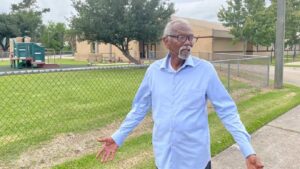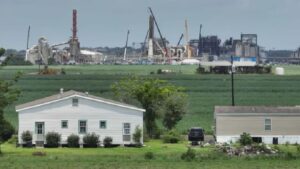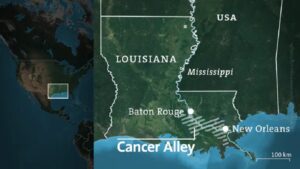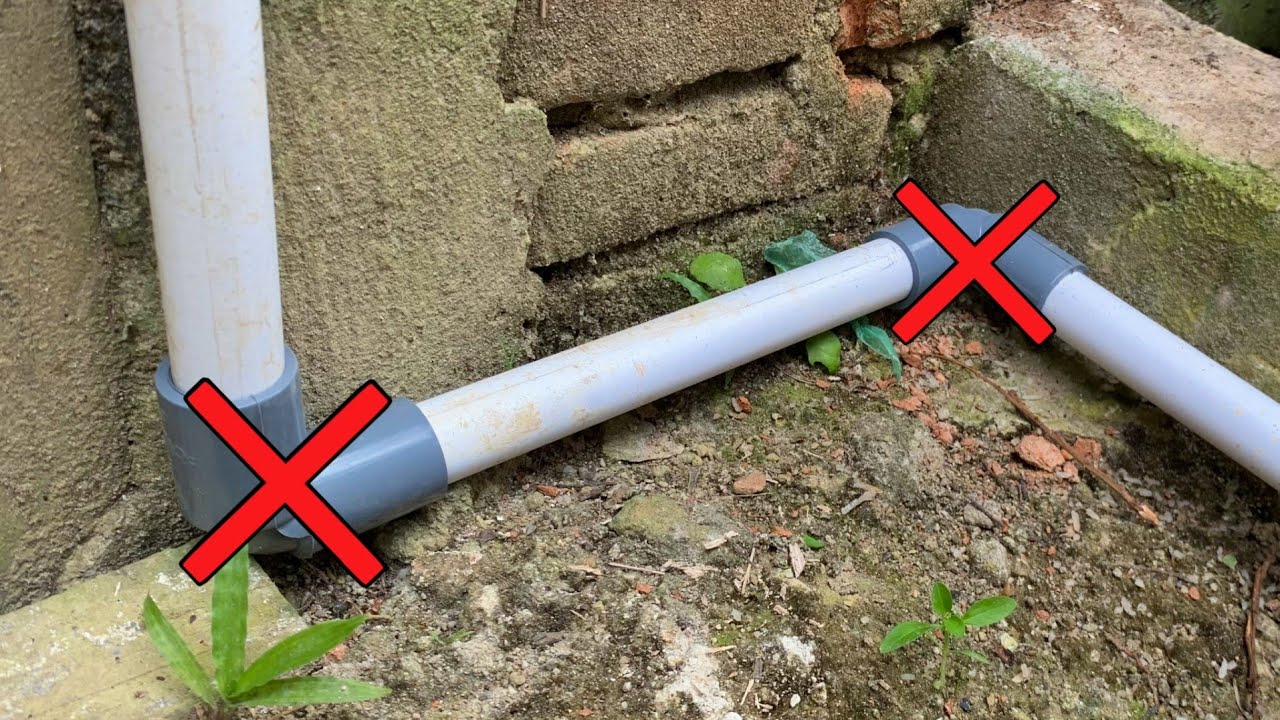Cancer in the Oil Delta
In the “Cancer Alley” along the Mississippi River, more than 130 kilometers of chemical factories and refineries are lined up. Nowhere in the USA are cancer rates as high as here, especially among black people.
Sacrificed to the Industry
Robert Taylor’s grief at his mother’s grave is not the only thing he feels. He walks slowly through the cemetery, stopping repeatedly to point at the gravestones inscribed with the names of members of his community who died from cancer, like his mother.
He becomes angry when he talks about cancer and begins to raise his usually soft-spoken voice. “We are simply being sacrificed here,” he says. He holds the industry responsible for the many cancer patients and deaths.
School near Chemical Factories
From three sides, factories surround the cemetery only a few meters away. Although he can no longer do anything for the dead here, Taylor knows that graves are not the only places located in close proximity to the industry. The primary school in his community is less than one and a half kilometers away from a chemical factory.
Chloroprene, a chemical used in the manufacturing of neoprene wetsuits for scuba diving, is produced there. Several years ago, the United States Environmental Protection Agency identified chloroprene as highly likely to be carcinogenic. Children in particular are at risk.
Earlier this year, the EPA filed a lawsuit against the chemical plant’s operator, stating that chloroprene emissions constitute a significant threat to public health. The plant’s operator refutes the claim and states that it complies with all applicable laws and regulations.
 Robert Taylor is particularly advocating for the closure of this school in his community. The children are being exposed to high concentrations of industrial toxins.
Robert Taylor is particularly advocating for the closure of this school in his community. The children are being exposed to high concentrations of industrial toxins.
The 130 km-long “Cancer Alley”
The so-called “Cancer Alley” stretches more than 130 kilometers along the Mississippi River in the US state of Louisiana. This area is home to numerous chemical factories and refineries.
According to government data, the industry generates jobs and tax revenue, but Louisiana has the worst air quality in the country and the highest cancer rates. Some residents believe that this price is too high to pay.
High Impact on Black Communities
Activist Taylor is primarily fighting for the children of his community. For him, the fact that so many factories are located here is no coincidence. Over 50% of the people who live here are black, and according to Taylor, they are the most vulnerable group. He asserts that this is blatant racism.
Kimberly Terrell has investigated this claim scientifically. She conducts research at Tulane University in New Orleans, an hour’s drive from Taylor’s community. She has studied the relationship between cancer rates and air pollution and the role that issues such as poverty and skin color play in all Louisiana communities.
Her study has shown that people of color, which refer to non-white individuals, and low-income groups have particularly high cancer rates in areas with high air pollution. Of course, not only black people are affected by air pollution. However, the study indicated that the closer people live to the industrial facilities, the greater the health risks. The industry has particularly targeted neighborhoods predominantly populated by black people.
 The closer people live to the industrial plants in Louisiana’s “Cancer Alley”, the higher the health risk. Areas mostly inhabited by black people are particularly affected.
The closer people live to the industrial plants in Louisiana’s “Cancer Alley”, the higher the health risk. Areas mostly inhabited by black people are particularly affected.
Lack of Trust in Government
Together with lawyers, Terrell supports other small initiatives along the Mississippi River in their lawsuits, including against state agencies. She believes that politicians often trust scientific evidence more than reports from residents because they want to make informed decisions. This lack of awareness about the structural problem makes it tougher for those affected. As a scientist, Terrell’s primary question is whether anyone has researched the health problem whenever someone says there is no evidence of it. The answer in Louisiana is often “no.” This is one of the reasons why she conducted the study.
Hope in the US Government
It seems that Robert Taylor’s message has reached Washington finally. On a hot day in the capital, the Louisiana man is standing in the White House’s rose garden under the shade of a tree. He has been invited, along with other activists, by President Joe Biden, who wants to emphasize that environmental protection is a high priority.
President Joe Biden promises Taylor and others that the government acknowledges the dangers of polluted air and will involve them in the decision-making process. Taylor feels that finally being heard by the government makes this day historic. However, he also states that he will judge actions and not just words. He will continue to fight until children in his neighborhood can go to school without any doubts about their safety.





























































